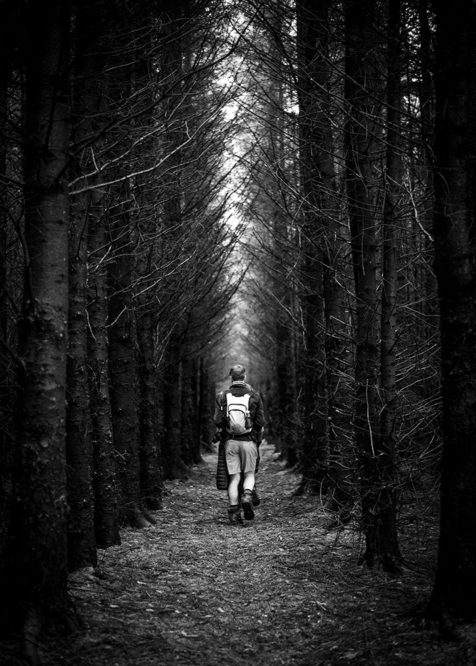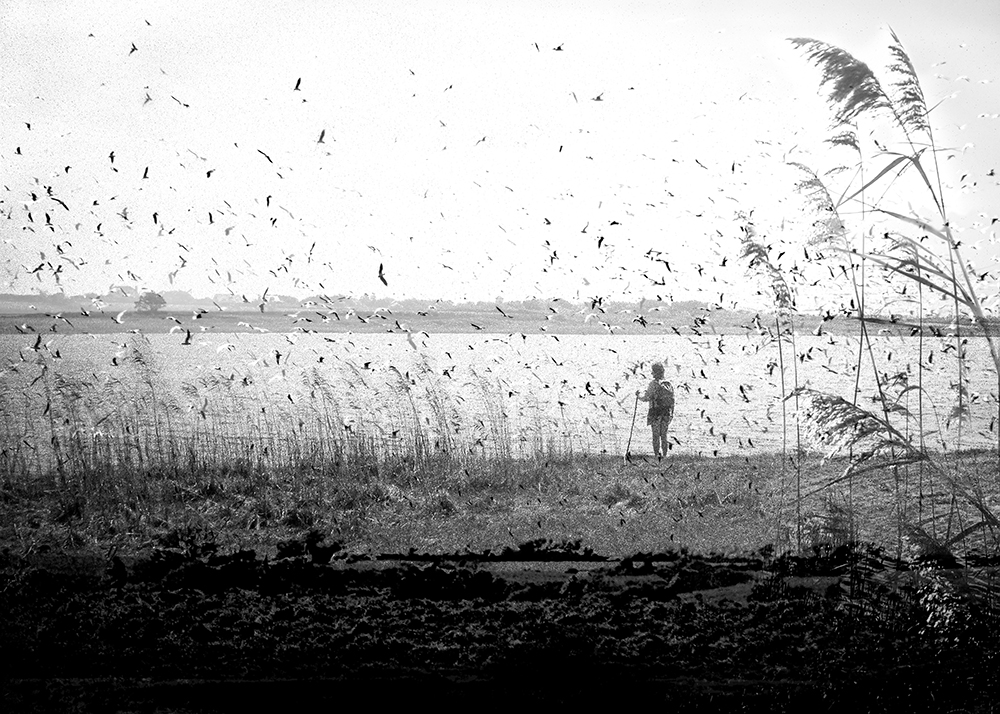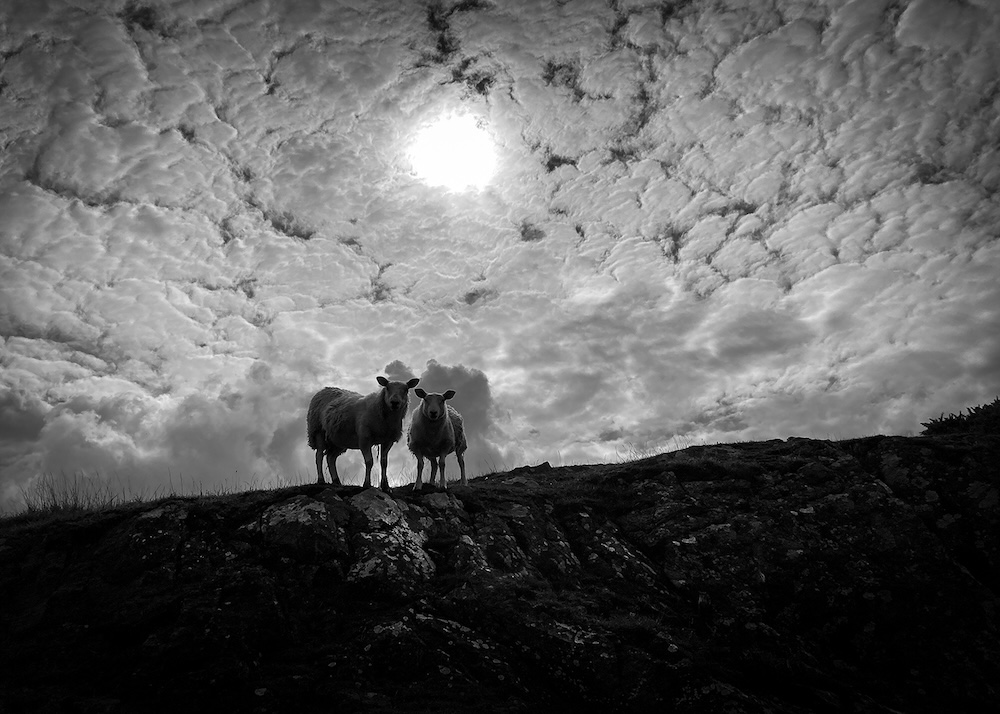Book review: The Way of the Bee by Karel Jasper

Jon Gower
Some years ago a group of writers, including myself, walked the old pilgrim route between Tintern and St Davids. We did so in memory of a friend of ours, Robin Reeves, who had become interested in such paths which connected place with place and people with God.
Each of us walked a portion of the path by ourselves but we were seldom alone, as we always met others who were walking various sections for a variety of reasons. And there was often a unity in our purpose – we were usually folk out to see and learn, and some there just to walk the dog – and we often moved in step, be it on flat terrain or places where the contour lines on the map huddled together.
And we learned things, resulting in a collective book, I Know Another Way, in which the text was illuminated with photographs by Paul Davies, who at the time lived in Manhattan.
The Pembrokeshire-based photographer Karel Jasper’s The Way of the Bee inverts that idea a little by being a book of photographs with attendant text, but has in common with it the charting of a pilgrim route.
This time it’s the one between Ferns in Wexford and St Davids, which follows the footsteps of St Aidan’s sixth-century journey to meet St David, his teacher and mentor. It’s a route which involves a sea-crossing therefore and which is also a bridge, linking two Celtic lands.
This fine book captures the experience of modern day pilgrims, not necessarily always following a religious route but nevertheless allowing the walker to ‘discover the sacred within the landscape, and within yourself.’
New dimensions
Each photograph, or assemblage of images over a succession of pages is accompanied by prose-poems, each with a judiciously-selected quote translated into Welsh and Irish Gaelic and these are deftly done and neatly add new dimensions. The idea of bootlaces being like vines is a lovely one, connecting the walker to the earth, leading to the sense of being properly grounded:
Cosnocht ar an talamh
Siúl nios boige, níos moille
Nasctha, fréamhaithe
I untie the vines around my feet
Step free of the boots that weight me down
I have all I need within me
Barefoot upon the ground
Yn droednoeth ar y ddaear
Gam wrth gam, yn dawel fach
Yn cysylltu, yn daearu

Claustrophobic
In an image such as “When I stray from the path” the walker is moving away from us, hemmed in by dark, claustophobic stands of planted pine, which, at a guess might be those at Raven Point Wood nature reserve near Wexford.
The light strafes in from either side and the determined shape of the pilgrim-hiker is framed by splays of branches which reach reach skyward as if in supplication and turn a woodland glade into a natural cathedral nave.
You can almost hear the crunch of boots on a carpet of pine cones and a path of leaf litter which seems to glow underfoot. As with so many of the photographs herein it’s worth pausing awhile to take it all in – the framing, the capturing of an illuminating, or in this case illuminated moment, the skill of the photographer’s eye in choosing that frame or moment.

“Meadow of Women” is an image of Our Lady’s Island, which has one of the oldest Marian shrines in Ireland and a very busy colony of terns in summer and you can see these ‘swallows of the sea soar and glide’ seemingly pixillating the picture as ‘sunlight catches on their crescent wings.’
The birds are only there for part of a year, animating the skies as they scythe through the air and they fill the air around the pausing walker as something wonderful to behold.

In company
Meanwhile, in “Watchful Companions” some curious sheep are set under suitably woolly fleeces of cloud, as if the sky is a soft pillow and the rocks beneath their hooves glints and glistens. The animals are ‘Witnesses to my journey/Curious, attentive/Reminding me/No matter where I go, I am not alone.’ And there is that about pilgrimage of course, the companionship of fellow travellers and the feeling of always having company, of always travelling in step with someone or something going in the same direction.
In this image of the two watchful, bovine companions the moonlight shines through, reminding one of all the other places where light appears in the book – creating shadows or being caught in reflections, making stained glass show its colours, or in the flickering flames of tea-candles in a holy setting, or acting as a warning to all shipping at the top of a lighthouse such as Strumble Head.
This is a beautifully designed and quietly enthralling book, which takes the reader on her or his own journey at a gentle pace.
We see groups of walkers holding hands, or, having a break, holding up tired feet in the direction of a beatific sun.
There are chance encounters with fiddle players or visits to holy wells which have been visited by many others over the long centuries and whose waters dance and glisten. There is always the sense of gentle momentum, of the rhythms of walking over rock and earth, as the landscape unfurls before you and you learn something about yourself and your place in things. Or as Jasper succinctly puts it, to ‘See the magic and beauty in the being/Just as I am in this moment.’
The Way of the Bee by Karel Jasper is published by Guided Pilgrimage. It is available from Seaways Bookshop (Fishguard), Victoria Bookshop (Haverfordwest), St Davids Cathedral Shop, Melin Tregwynt Woollen Mill, The Golden Sheaf (Narberth) and The Ferns Medieval Experience (Ferns, Wexford) or directly from the author.
Support our Nation today
For the price of a cup of coffee a month you can help us create an independent, not-for-profit, national news service for the people of Wales, by the people of Wales.




